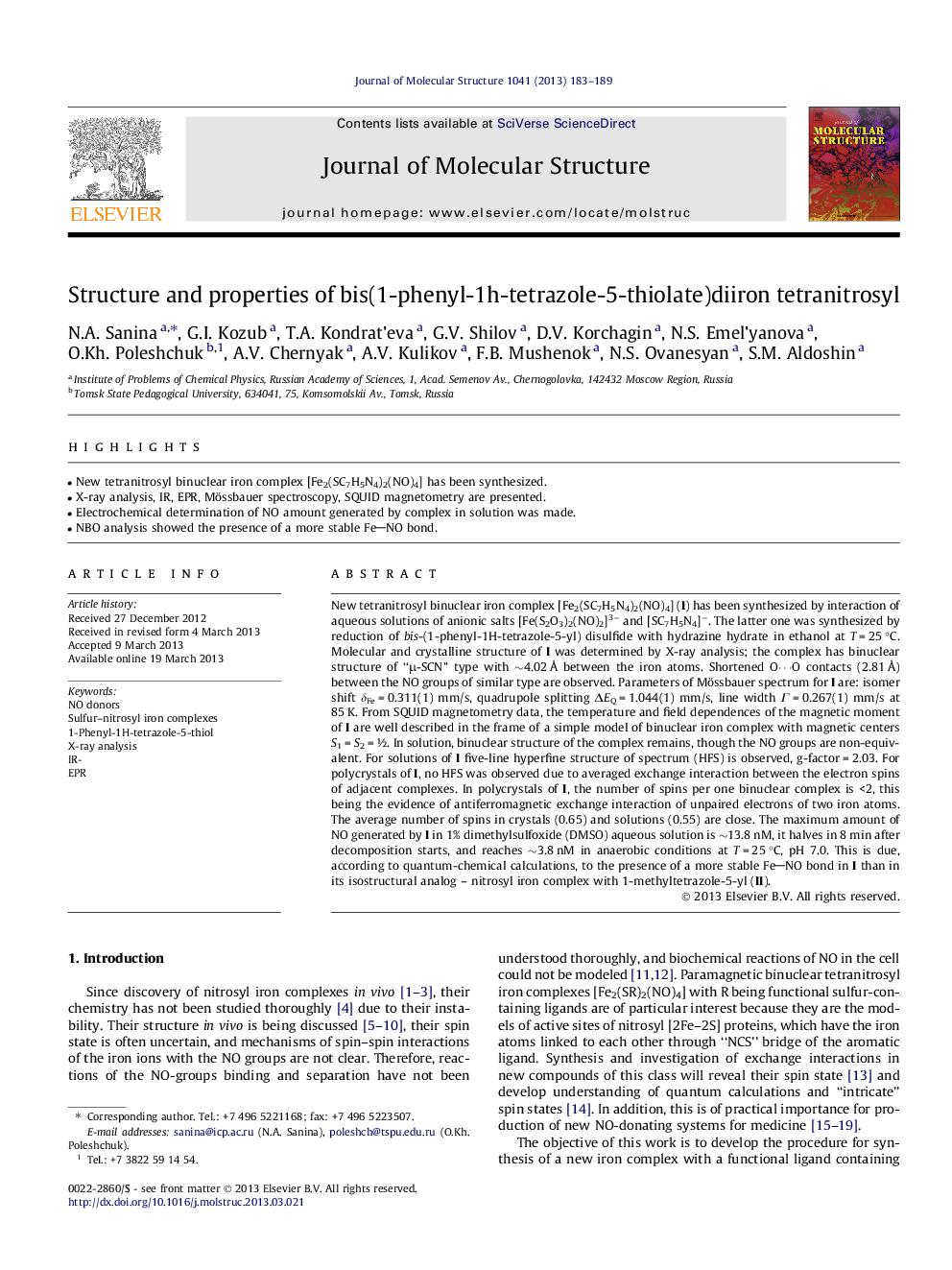| Article ID | Journal | Published Year | Pages | File Type |
|---|---|---|---|---|
| 1408863 | Journal of Molecular Structure | 2013 | 7 Pages |
•New tetranitrosyl binuclear iron complex [Fe2(SС7H5N4)2(NO)4] has been synthesized.•X-ray analysis, IR, EPR, Mössbauer spectroscopy, SQUID magnetometry are presented.•Electrochemical determination of NO amount generated by complex in solution was made.•NBO analysis showed the presence of a more stable FeNO bond.
New tetranitrosyl binuclear iron complex [Fe2(SС7H5N4)2(NO)4] (I) has been synthesized by interaction of aqueous solutions of anionic salts [Fе(S2O3)2(NO)2]3− and [SС7H5N4]−. The latter one was synthesized by reduction of bis-(1-phenyl-1H-tetrazole-5-yl) disulfide with hydrazine hydrate in ethanol at T = 25 °C. Molecular and crystalline structure of I was determined by X-ray analysis; the complex has binuclear structure of “μ-SCN” type with ∼4.02 Å between the iron atoms. Shortened О⋯О contacts (2.81 Å) between the NO groups of similar type are observed. Parameters of Mössbauer spectrum for I are: isomer shift δFe = 0.311(1) mm/s, quadrupole splitting ΔEQ = 1.044(1) mm/s, line width Γ = 0.267(1) mm/s at 85 K. From SQUID magnetometry data, the temperature and field dependences of the magnetic moment of I are well described in the frame of a simple model of binuclear iron complex with magnetic centers S1 = S2 = ½. In solution, binuclear structure of the complex remains, though the NO groups are non-equivalent. For solutions of I five-line hyperfine structure of spectrum (HFS) is observed, g-factor = 2.03. For polycrystals of I, no HFS was observed due to averaged exchange interaction between the electron spins of adjacent complexes. In polycrystals of I, the number of spins per one binuclear complex is <2, this being the evidence of antiferromagnetic exchange interaction of unpaired electrons of two iron atoms. The average number of spins in crystals (0.65) and solutions (0.55) are close. The maximum amount of NO generated by I in 1% dimethylsulfoxide (DMSO) aqueous solution is ∼13.8 nM, it halves in 8 min after decomposition starts, and reaches ∼3.8 nM in anaerobic conditions at Т = 25 °С, pH 7.0. This is due, according to quantum-chemical calculations, to the presence of a more stable FeNO bond in I than in its isostructural analog – nitrosyl iron complex with 1-methyltetrazole-5-yl (II).
